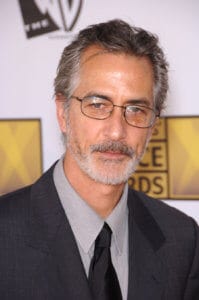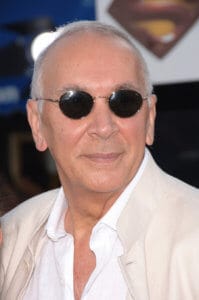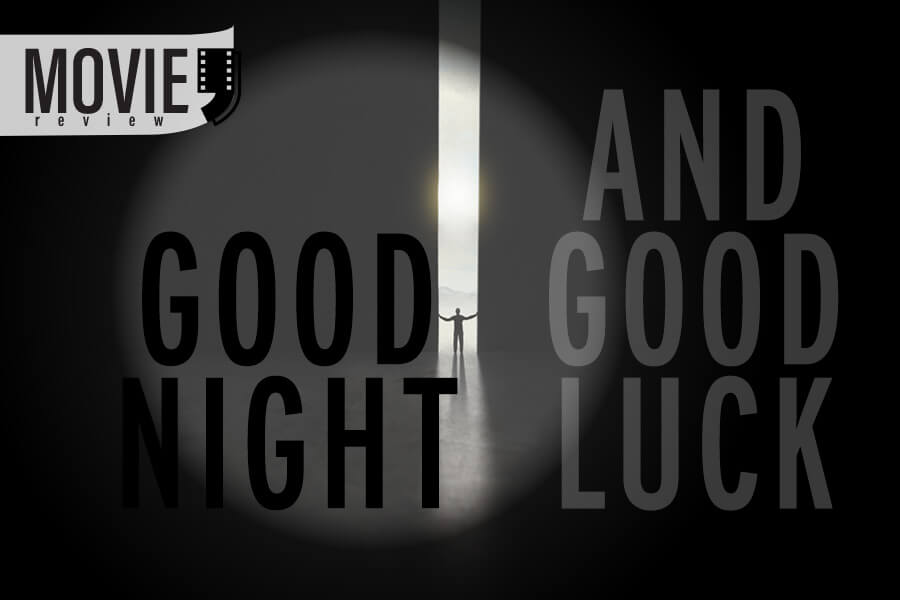Anew for me to see other George Clooney directed films. I always knew him a perfect actor, moreover, the first thought to appear- George Clooney is a handsome man. But he could make outstanding stories, one of that - Good night, and good luck - has been Oscar awarded four times. Particularly, George filmed not only an original film with effects and prospective ambiance, but he also contributed to the history of the USA. And his personal contribution was to remember the journalism of '50s and translate all that atmosphere his father was involved in. Have you known Clooney is the son of a well-known journalist? Me -not. But childhood formed a mature part of him. Clooney established like a reporter and also he did a protagonist well, a blessing to the chance of being participatory to media from an early age. So, George Clooney, as Fried Friendly, Robert Downey Jr. - Joe Wershba.

In reality, George Clooney took a real story in the basement of `Goodnight, and Good Luck`. For me to discuss the politics of the USA is quite grueling for several reasons. First, I’m not into the roots of how that system grew. Second, the 50s was a postwar period of global change. In some countries that were the rage different and controversial. Last, but not least, the main idea of the plot is intertwined with Mr. Clooney biography, faced the politics on its conflict nuclear in the story.
To show the atmosphere of the media and government became a fascinating cover of the hugest wish to show how crucial the social revolution could be. How fearful journalists were under pressed, without any democracy. And how in that society out of democracy, the bravest acts, like speak your mind or feel your heart, could put at risk the freedom. All those strict rules, political extremes forced to build anew journalism that we see today. In the plot of `Goodnight and Good Luck,` George Clooney shows the tough times of cruel anti-communism regime Senator Joseph McCarthy.

Back to 1953, reporter Edward R. Murrow (David Strathairn) and his colleagues on the CBS channel let to the air the unfair story about U.S. Air Force officer Milo Radulovich. He has been suspected of the case his family members were communists. Milo refused to betray them and approve the fact they deal with the communist. An outrageous thing was that Milo’s blaming facts were kept inside a sealed envelope, so nobody saw the evidence. Against the warns of CBS New’s director Sig Mickelson (Jeff Daniels), Murrow took a risk and revealed the story to the mass. However, it was accepted positively by people and due to the active feedbacks, Milo was reinstated. Furthermore, from the special sources, it leaked out that Murrow was in tiny cooperation with the Soviets, being on their payroll.

William Paley (Frank Langella), who was an Executive Chief of CBS, warns him to be accurate in the information attack, as if McCarthy catch him in a trap, it would be he who becomes the next liquidation story. We are familiar with `Witch hunt`, the specialists call it the main attack on Senator McCarthy Anti-communist infiltration in the U.S.government. Without disclaimers, the story concerned about not only the professional duties but also the human values, like a friendship. Murrow helped his colleague, Don Hollenbeck (Ray Wise) who getting recovered after the divorce and succumbed of bulling another writer Jack O`Brian. He accused Don of being stubborn in the news and called him `pinko`. Clooney showed his father a noble profession. When George was a student, he also studied journalism, so he could be in touch with the basics. But nothing impressed him more, than conversations with father and memories from childhood, particularly lead to the film idea.
The son of the news reporter
Nick Clooney, one of the prominent reporters, anchormen of the US national channels. It was he, one of the majority, who followed the truth of Princess Diana’s death. He argued with many commentators and never shied to ignore the issues in the media. Nick Clooney was one of those, who created the common ethics of US journalism. So all the events that took place in the film are real or concerned directly last time. George Clooney grew up in an atmosphere of constant news changing. Together with the information generation, he saw an epic period of spread love and wealth. Sometimes it replaced by poverty and unemployment. But the main thing his father taught him – to save the personality, particularly when you represent the public profession. Nick Clooney marked Murrow as the high sign of quality, he set the standard that no one could ever reach again.
Growing up in the revolution times for American society, but not only this, for sure, Clooney was pretty familiar with every issue that appears and burst into the mass was the light. So being in the University, he also made efforts to study journalism. Inspired by the evocative footage by the time of his father’s career, he came up with the idea to renew McCarthy and Murrow days. George made it a factual piece. He attempted to treat this as his father did and always about it for a long time. Clooney played the role there, so he could feel the ambiance and live the partly life of his father. According to the facilities, every gesture, every scene was double sourced. Enormous numbers of things were empowered to recreate the content of those times. Finally, they provide the footage, archives where McCarthy playing himself, only to escape the false and untruth declamation. Clooney found the arguments against Murrow, told to his family, relatives. CBS accessed the documents stuff, even though the wage was pretty high. All the efforts were literally quite expensive and consist of million of dollars. But rather to make its effect and save the real impression.
What does it feel to film in colorless, when it’s 2005
First, the idea to create in black and white was the initial impulse to contribute to history. Second, the footage of McCarthy required full harmony with saturation, which was forbidden to transform into color frames. Clooney knew Murrow and McCarthy in black and white. He didn’t know anything about them in color. At the very beginning of the line, George was looking for the lenses and other facilities like in the art of sixteen. Later, Clooney decided to make it more of a fly on the wall, concentrated look from the invisible observer. However, the reason to cancel each of those ideas hide in the number of light resources that they took them to bright the black and white film.
And the general image that in color looked like rather comical, and a serious, groundbreaking documentary. Another thing we can see distinguish – the commercial of the cigarettes that characters use even while it airing. As Clooney told, it was obligatory to show the tragic two-thirds of those guys died of lung cancer. There was the sort of whitewashing now that wants us to take out cigarettes from films. Without wish of glamourized the smoking, he made with the contrast one of the impressive stories that affected a further generation of journalists and contribute to the endless transformation of the media, against the politics.
Photos: Shutterstock / Photomontage: Martina Advaney
More movie reviews from the black and white series here:
Schindler`s List – from the First Attempt to Spielberg Triumph
Support us!
All your donations will be used to pay the magazine’s journalists and to support the ongoing costs of maintaining the site.
Share this post
Interested in co-operating with us?
We are open to co-operation from writers and businesses alike. You can reach us on our email at cooperations@youthtimemag.com/magazine@youthtimemag.com and we will get back to you as quick as we can.









